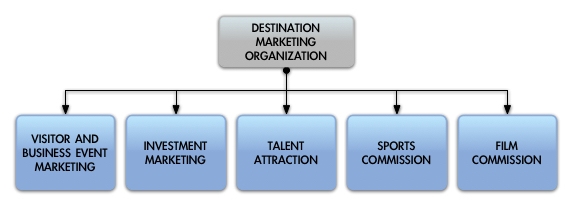A colleague of mine from Vital Economy – one of the US’ foremost social enterprises focused on community economic development strategies – forwarded me a recent Forbes article about how cities are getting serious about marketing campaigns to attract talent to their destinations. They cite Louisville, Montreal, Cleveland, Calgary, Raleigh and Houston as examples of cities that have established comprehensive community development initiatives under various organizational constructs, such as economic development offices (EDOs) or chambers of commerce, to market their destinations as great places to live and work.
When you go to their respective websites (check-out Montreal in particular) you’ll find that their look, feel and approach is strikingly similar to that of a DMO looking to engage visitors. And why not:
- EDOs are attracting talent and investment.
- DMOs are attracting visitors.
- Both are dealing with intensely competitive global marketplaces (the “war for talent” and investment is every bit as brutal as competition for meetings and events).
- Both want to build relationships with executive-level decision-makers as well as engage individual consumers.
- Both are in the destination marketing business – presenting their destination’s emotional and pragmatic benefits to their target audiences with the objective of making their community a better place to live, work and play.
The potential partnership synergies are enormous.
When DestinationNEXT identified the development of new business models as one of three provocative transformational opportunities for the future of DMOs, the top element in business model evolution was “greater involvement in broader economic development initiatives.”
So what does that look like?
There are currently numerous DMOs that have recognized the important opportunity that closer working relationships with EDOs presents for everyone in the community. For starters, many progressive communities have already seen fit to include the film and/or sports commissions as part of the current DMO since they too are in the business of marketing the destination. At the same time, many of those relationships remain issue and/or opportunity based – that is to say that there are currently very few examples of ongoing formal structural or MOU-type DMO-EDO initiatives with measurable objectives and aligned strategies.

Maybe the time is right for everyone to think a little bigger. Since DMOs and EDOs are BOTH in the destination marketing business (though to different audiences) does the future destination marketing organization one day look like this?:

Consider some of the benefits of a broader consolidation with EDOs:
- More business leads: Combining relationship networks across geographies and industries will help develop more leads for meetings/events, business investment etc.
- Community support: Bringing stakeholders together in one entity will help community engagement and stakeholder understanding (e.g. business and investment community) of destination marketing activities, building both marketplace and political capital for use where and when needed.
- Brand alignment: One consistent destination story will improve traction in intensely competitive marketplaces.
- Destination development: Having a destination development plan (e.g. convention center expansion, tourism improvement district etc) that is broadly endorsed by tourism and economic development leaders/constituencies will help secure the required government policy support as well as private/public sector financing.
- More business generation capacity: Enhanced operating efficiencies allowing for greater investment in direct business-generating destination marketing and economic development activities.
However, the idea has three fundamental challenges:
- Funding: With prescriptively defined funding already in-place for many DMOs through hotel tax allocation and other lodging-based voluntary levies, having those proceeds dedicated to anything but visitor transaction generation could present problems.
- Leadership: While the big picture mission (“making the community a better place to live, work and play”) won’t get much challenge, the need to also meet the expectations of the diverse individual stakeholder groups for each organization will take considerable energy.
- Culture: This could be the biggest challenge of all. For example, while most tourism stakeholders have a richly-grounded hospitality ethos, the economic development mindset can be very bottom-line driven. Can they co-exist?
Of course its idealistic, simplified and maybe even naïve. But if superior relationship development and operational performance from community destination marketing initiatives in intensely competitive marketplaces is the objective, the concept of one organization formally leading a community’s various destination marketing initiatives is worth exploring.
